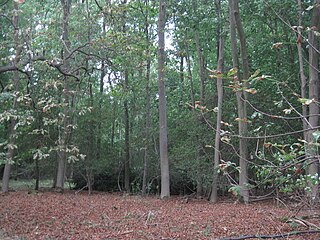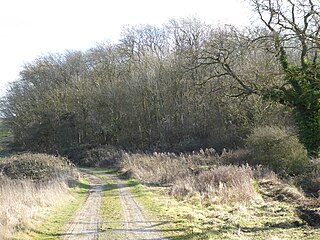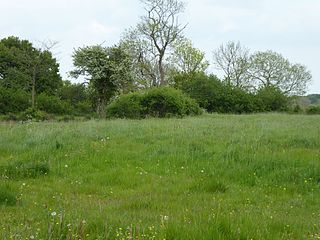| Site of Special Scientific Interest | |
 | |
| Area of Search | Northamptonshire |
|---|---|
| Grid reference | SP 563 582 [1] |
| Interest | Biological |
| Area | 47.2 hectares [1] |
| Notification | 1985 [1] |
| Location map | Magic Map |
Badby Wood is a 47.2 hectare biological Site of Special Scientific Interest (SSSI) south of Badby in Northamptonshire. [1] [2]

A Site of Special Scientific Interest (SSSI) in Great Britain or an Area of Special Scientific Interest (ASSI) in the Isle of Man and Northern Ireland is a conservation designation denoting a protected area in the United Kingdom and Isle of Man. SSSI/ASSIs are the basic building block of site-based nature conservation legislation and most other legal nature/geological conservation designations in the United Kingdom are based upon them, including national nature reserves, Ramsar sites, Special Protection Areas, and Special Areas of Conservation. The acronym "SSSI" is often pronounced "triple-S I".

Badby is a village and a rural parish of about 2,020 acres (820 ha) in the Daventry district of the county of Northamptonshire, England.

Northamptonshire, archaically known as the County of Northampton, is a county in the East Midlands of England. In 2015 it had a population of 723,000. The county is administered by Northamptonshire County Council and by seven non-metropolitan district councils. It is known as "The Rose of the Shires".
This is ancient semi-natural woodland on acidic soils, and it has been forested for over 700 years. It is mainly pedunculate oak, with varied ground flora including creeping soft-grass, wood anemone, yellow archangel and bluebell. A small marsh has very diverse herbs. [3]

Anemone nemorosa is an early-spring flowering plant in the buttercup family Ranunculaceae, native to Europe. Common names include wood anemone, windflower, thimbleweed, and smell fox, an allusion to the musky smell of the leaves. It is a herbaceous perennial plant growing 5–15 centimetres (2–6 in) tall.

Hyacinthoides non-scripta is a bulbous perennial plant, found in Atlantic areas from north-western Spain to the British Isles, and also frequently used as a garden plant. It is known in English as the common bluebell or simply bluebell, a name which is used in Scotland to refer to the harebell, Campanula rotundifolia. In spring, H. non-scripta produces a nodding, one-sided inflorescence of 5–12 tubular, sweet-scented violet–blue flowers, with strongly recurved tepals, and 3–6 long, linear, basal leaves.
There is access by footpaths from Badby. Much of the eastern half of the wood falls outside the SSSI. [2]















